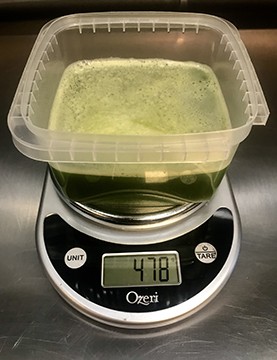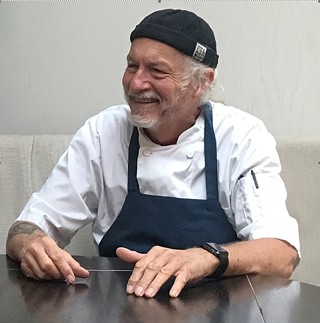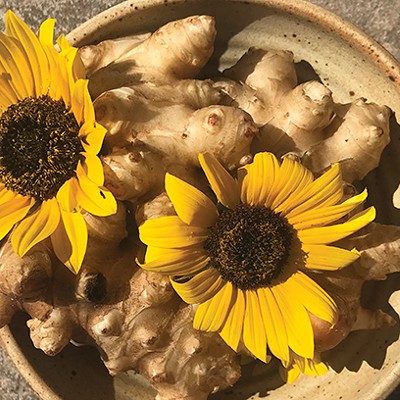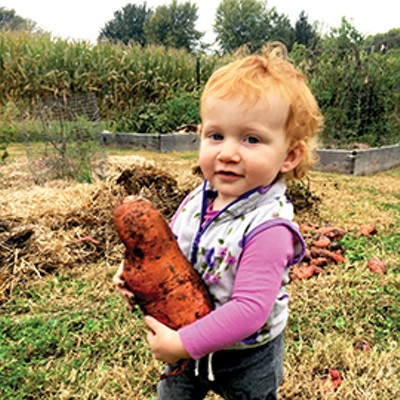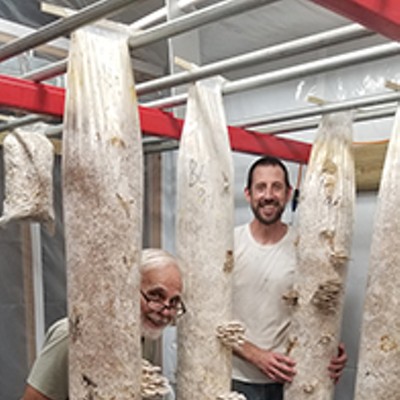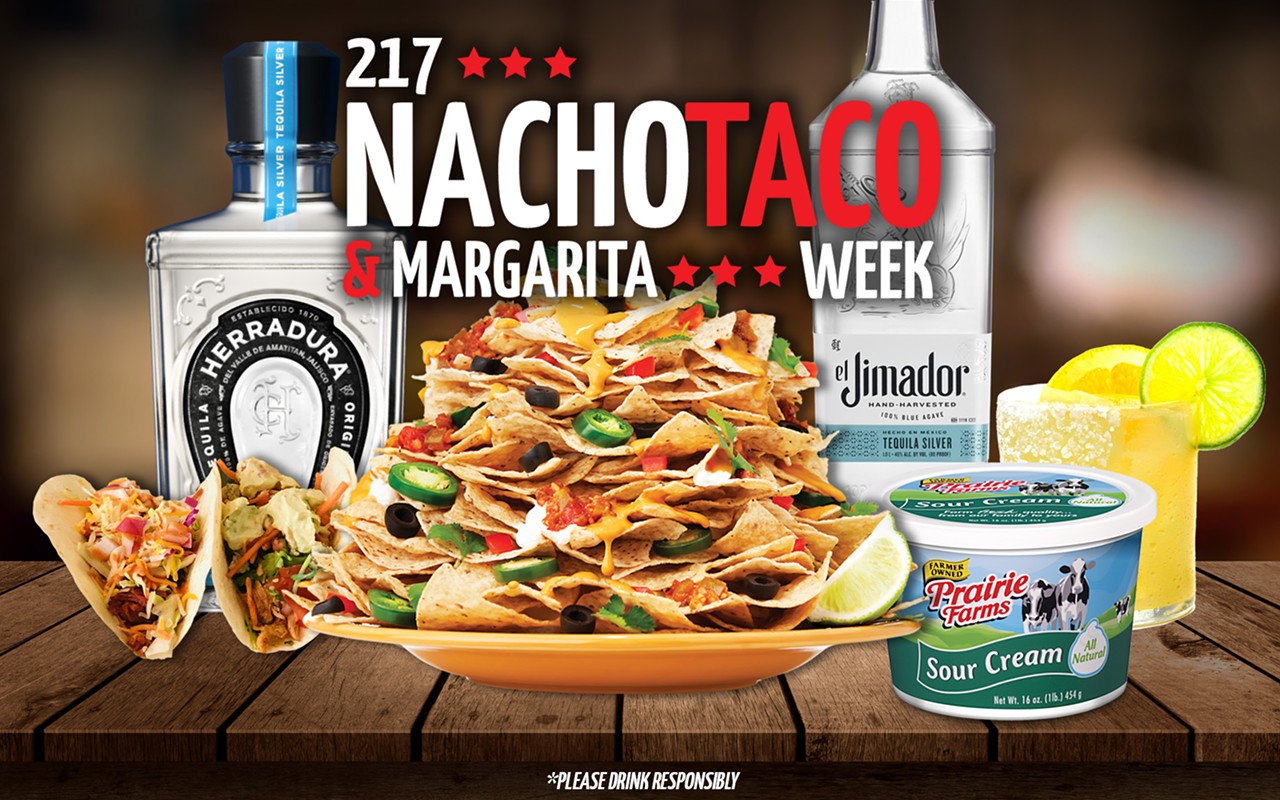Has the experience of spending my first six months of retirement working in a restaurant kitchen made me a better home cook? It definitely has, but not in the ways I would have expected. Much of my time in the kitchen is spent picking little leaves off of thyme sprigs or cutting a basket of shallots into a quart of tiny little ⅛-inch squares. I’ve learned how to make foams and gels. During dinner service, it’s about making each of my dishes look exactly like the one before. When the chef de cuisine designs a dish it is my responsibility to replicate it exactly as he intended; creative improvisation is frowned upon.
My six months in a restaurant kitchen have taught me to be neater and more organized. I’m learning how to work faster and more efficiently. It’s taught me how to move quickly through a crowded kitchen, surrounded by people with hot pans and sharp knives, without bumping into anyone. I’ve learned how to properly sharpen a knife and how to keep my fingers out of its path.
Probably the most important lesson I have learned in the restaurant kitchen is the benefit of measuring ingredients by weight rather than volume. My restaurant has six digital scales and they are in constant use. We don’t have measuring spoons or measuring cups. When my chef hands me a recipe to prepare, the ingredients are measured in grams rather than tablespoons or cups.
How does a digital scale help me to be a better cook? It’s because my recipes work better when I weigh my ingredients. Scooping teaspoons of dry ingredients and eyeballing liquid cups is imprecise, and often messy. If you ask different people to measure out a cup of flour, you’ll find that a cup of flour can weigh anywhere between 115 and 170 grams. It depends whether you aerate the flour, whether you tap on the cup as you go, or whether you tend to be heavy-handed. If your bread or cake recipe calls for 4 cups of flour, the measurement of your main ingredient could vary by as much as 220 grams. Too much flour is one of the top reasons that your cookies end up hard or your cake ends up dry. The testing editor at America’s Test Kitchen evaluated dry measuring cups, liquid measuring cups and measuring spoons by testing their accuracy against a laboratory scale and found that results could be off by as much as 30%.
Salt is an example in which volume measurements can vary widely. Because each salt variety is sized and shaped differently, the volume measurement of one type does not result in the same amount of salt as another. Table salt is fine-grained. Kosher salt is coarser and the crystals are large and irregular. Fine sea salt is somewhere in the middle. If your recipe calls for ¼ cup of kosher salt, you’ll need one tablespoon less if you substitute table salt and about a teaspoon less if you substitute fine sea salt.
In addition to offering greater accuracy, using a digital scale allows you to be much less messy. Measuring is easier and cleaner and results in fewer dirty measuring cups when you use a scale. You can measure everything right into your mixing bowl. Digital kitchen scales have a “tare” function which allows you to place your mixing bowl on the scale and reset the weight to zero so that only the weight of your ingredient is being measured. For example, yesterday I was asked to make a large batch of tempura batter. I was instructed to measure out the wet and dry ingredients separately and then whisk the dry ingredients into the wet ingredients. I placed a mixing bowl on my scale and pressed the tare button to zero out the bowl. I added 268 grams of all-purpose flour. I pressed the tare button to bring the scale back to zero. I then added 268 grams of rice flour. I pressed the tare button again to return to zero and added 16 grams of salt. I hit the tare button to zero out once again and finally added 8 grams of baking powder. In a second bowl I poured in 700 grams of sake, pressed the tare button to return to zero, and then slowly drizzled in 30 grams of sorghum. I then whisked the dry ingredients into the bowl with the liquids. All there was to wash was two bowls and a whisk. If I were to have prepared the recipe using conventional volume measurements, I would have had several measuring cups and spoons to wash in addition to the whisk and bowls.
I always have a batch of sauerkraut or kimchi fermenting away on my kitchen counter. The process involves adding salt to cabbage. The ideal amount of salt is 2% of the weight of the cabbage. A recipe for sauerkraut might call for adding 1 ½ tablespoons kosher salt to a “medium” head of cabbage. Your concept of “medium” might be different than mine. It would be much easier and more accurate to just weigh the cabbage and add 2% of its weight in salt.
Using weight measurements makes it easier to scale your recipes up and down. Rather than having to make a half recipe of something that calls for ⅓ of a cup of honey or quadrupling a recipe that calls for 2 ½ cups of flour, it is much easier to put the ingredients on the scale and let the weight do all the work for you.
Most recipes coming out of Europe list ingredients by weight. America has resisted adopting weight measurements just as we’ve resisted switching over to the metric system. But now, with the availability of good quality inexpensive kitchen scales, there is a growing trend for recipes to list ingredients by both weight and volume. Periodicals such as Bon Appetit magazine will soon begin to include weight measurements in ingredient lists.
I use a My Weigh KD8000 scale in my home kitchen. It has a unique percentage function that I love. A standard baker’s bread recipe calls for a ratio of 100% flour, 60% water, 3% fresh yeast, and 2% salt. With this scale I can weigh out any amount of flour, hit percent, then zero out the scale with the tare button, and add water until the display reads 60%. Then I zero the scale again and add the next ingredient. The My Weigh KD8000 retails for around $55. A less expensive option is the Ozeri Pro Digital Kitchen Food scale. It doesn’t have the advanced features of the My Weigh KD8000, but for around $15 it’s an excellent basic scale. Both scales are easy to clean, simple to read, and convenient to store.
Economies of a scale
Weight of ingredients, not volume, is key
[
{
"name": "Air - MedRect Combo - Inline Content 1",
"component": "11490391",
"insertPoint": "3",
"requiredCountToDisplay": "1",
"parentWrapperClass": "fdn-ads-inline-content-block"
},{
"name": "Air - MedRect Combo - Inline Content 2",
"component": "11490392",
"insertPoint": "7",
"requiredCountToDisplay": "5",
"parentWrapperClass": "fdn-ads-inline-content-block"
},{
"name": "Air - MedRect Combo - Inline Content 3",
"component": "11490393",
"insertPoint": "12",
"requiredCountToDisplay": "9",
"parentWrapperClass": "fdn-ads-inline-content-block"
}
]
Illinois Times has provided readers with independent journalism for almost 50 years, from news and politics to arts and culture.
Your support will help cover the costs of editorial content published each week. Without local news organizations, we would be less informed about the issues that affect our community..
Got something to say?
Send a letter to the editor and we'll publish your feedback in print!

